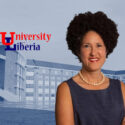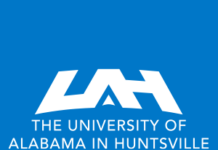 The City University of New York recently reported on the diversity of the student body at its School of Medicine. According to a recent statement, 53 percent of CUNY medical school students are members of an underrepresented minority group. This is a huge difference from the average American medical school, where 59 percent of students are White. More specifically, Blacks represent 35 percent of the CUNY medical school student body, which is five times the national percentage. Last year, the Association of American Medical Colleges cited the CUNY School of Medicine as the fifth top medical school in the country for recruitment of Black and African-American students, exceeded only by the four historically Black medical schools.
The City University of New York recently reported on the diversity of the student body at its School of Medicine. According to a recent statement, 53 percent of CUNY medical school students are members of an underrepresented minority group. This is a huge difference from the average American medical school, where 59 percent of students are White. More specifically, Blacks represent 35 percent of the CUNY medical school student body, which is five times the national percentage. Last year, the Association of American Medical Colleges cited the CUNY School of Medicine as the fifth top medical school in the country for recruitment of Black and African-American students, exceeded only by the four historically Black medical schools.
“The CUNY School of Medicine’s emergence as a national leader in diversity closely adheres to its mission of public service,” said Interim Chancellor Vita C. Rabinowitz. “Like the five-year Sophie Davis program from which it grew, our medical school is uniquely committed to training physicians and other health care professionals who want to address health disparities and improve primary, community-based health care in underserved areas.”
Before becoming an official medical school, the Sophie Davis School of Biomedical Education, was a five-year program that integrated a three-year bachelor’s degree with the first two years of traditional medical education. Students then transferred to one of six cooperating medical schools for the final two years of clinical training, and received their medical degrees from those institutions. Now, the students complete their medical education at CUNY, spending their two years of clinical training in rotations at two partnering hospitals, St. Barnabas in the Bronx and Staten Island University Hospital, along with several clinical practices in the New York area.
“The distinctive element of this approach is that even before students start their medical curriculum they are taking courses that get them thinking about vital cultural and social issues in communities of need,” said City College President Vincent Boudreau “This approach allows us to root the school’s medical education in a real sense of mission and purpose. We talk frequently, and with pride, about CUNY as a driver of social mobility. At the CUNY School of Medicine, we’re training doctors to directly combat some of the most devastating obstacles to social mobility: negligible primary health care in underserved areas. This is especially important at a time when the number of primary care physicians is declining nationally. The need has never been greater.”











